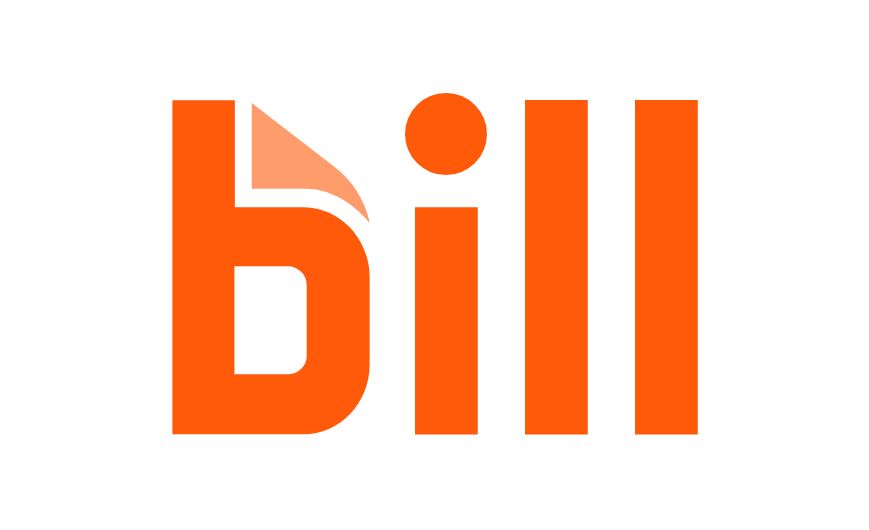An engineer with more than 15 years’ experience in the private sector, René Garcia founded bth4 in 2013. Based in the American town of Tucson, Arizona, the company produces an innovative new type of night guard that offers an alternative method to treating bruxism. Unlike conventional night guards that merely aim to prevent future tooth wear, bth4 model relies on a direct biofeedback mechanism to break the habit of bruxism itself.
Mr Garcia, where do traditional night guards go wrong?
A mouth guard one would get at the dentist’s is more focussed on protecting the teeth against the damage of bruxism. Conventionally, these have no mechanism that could prevent the habit itself, it merely provides a protective layer on the teeth, so there is no force of clenching or grinding directly on the teeth. Such a mouth guard ignores the rest of the symptoms of bruxism, such as headaches and jaw and neck pain, which are results of an excessive force of the jaw. This is one of the main differences of bth4. The bth4 guard focusses on tackling the problem of bruxism itself by providing direct feedback to the palate and training the brain that bruxing is an unwanted action, instead of focussing solely on damage control. Applying pressure to the jaw using bth4 causes immediate discomfort and the discomfort is proportional to the force applied by the jaw.
Could you explain the mechanical system of the device?
The principle is in some way similar to a “thumb-sucking habit breaking device”. In this case, the undesirable behaviour is the excessive application of pressure. When using bth4 during a bruxism event, the motion of the lower jaw transfers through the feedback mechanism, which makes spikes contact the palate and causes immediate discomfort—this forces the user to cease the undesirable behaviour. Our goal is to reduce or eliminate the habit that is bruxism, at its root, based on the premise that rather than clenching and grinding, the root of the problem is excessive pressure applied by the jaw.
How did the idea for bth4 come about?
After thinking of a solution for several days, the idea came to me in the middle of the night. I’ve had plenty of motivation from suffering from severe bruxism all my life, from observing my daughter grinding and chipping her teeth at the very early age of five, and wife suffers from TMJ disorder, which we suspect is a consequence of her intense clenching.
How does your mouth guard differentiate itself from other biofeedback devices?
Many biofeedback devices use electronics and rely on batteries. Some even have the battery stored in the mouth, which could potentially be harmful. Another problem that often occurs with electronic biofeedback devices is something called a “false trigger”. Many of these devices are focussed on detecting muscle activity and detect movement that is not bruxism, but still gives feedback, for instance, turning around in bed. This makes it hard to distinguish what exactly the unwanted behaviour is, as it pulses when it is not needed. Our device works without the need of complex electronics or batteries. This not only reduces the complexity, size and potential risk that comes with a device that uses batteries, it also significantly reduces the cost, making it available to the broader public.
What are some of the symptoms of bruxism that the bth4 mouth guard prevents?
The symptoms bth4 targets are all associated with excessive force applied by the jaw. These include headaches, neck, ear, jaw and facial pain, damage to the teeth, joint wear, as well as locking or popping of the joint and gum recession.
Other benefits have also been attributed, such as reductions in awake bruxism, thanks to the principle of operation. The device trains the user on the undesirable feedback while sleeping and remains with the user during awake bruxism, thereby reducing the frequency of bruxism events even when the device is not being used.
What would your arguments to dentists be to prescribe your device?
Conventional mouth guards are excellent at preventing teeth damage, but could neglect many of bruxism’s devastating effects. They also require multiple iterations of adjustment and regularly exacerbate the symptoms of bruxism. bth4 promotes a more desirable behaviour by eliminating the excessive forces, avoiding occlusion and encouraging a more natural resting position. Plus, fitting time is practically eliminated.
Being a new product, it has received some change resistance, which is natural. Bruxism is a very hard problem to tackle, so scepticism from dentists is justified whenever a new product enters the market. However, it is now improving thanks to the positive customer response we’ve received. We have continued to receive great feedback and we have a more positive presence on websites and forums. It is extremely satisfying to hear that people are regaining their quality of life thanks to bth4.
Tags:
The Greeks had a word for what we now refer to as bruxism: brychein—the grinding or gnashing of teeth. With references to this “gnashing of teeth” in ...
In about two months, ROOTS SUMMIT, one of the most exciting endodontic events of this year, will kick off in Prague in the Czech Republic. One of the ...
ROOTS SUMMITs have been held since the late 1990s. Over the past two decades, Stephen Jones and Dr Freddy Belliard have been part of the meeting that ...
Running two private dental practices in the Belgian city of Liège, lecturing in Belgium and France, collaborating with the University of Liège as an ...
Managing aesthetics can be a challenging task for dental professionals and it plays an important role in regenerative therapy. Therefore, the Osteology ...
Digitalisation is one of the most important trends that have reshaped dentistry in recent years. Copenhagen-based dental company 3Shape has been one of the ...
On Thursday, friends and members of the ROOTS SUMMIT community gathered at the 38th IDS in Cologne for coffee and croissants. The brunch provided an ...
Faye Donald is a multi-award-winning dental hygienist who puts patients’ interest first. She became a certified Swiss Dental Academy (SDA) trainer in 2016...
JOENSUU, Finland: In a new study, researchers from the University of Eastern Finland have developed a new, more affordable method of monitoring bruxism. ...
After its launch at IDS in March 2011, Fotona’s dual-wavelength (Er:YAG and Nd:YAG) LightWalker laser system quickly earned widespread industry praise and...
Live webinar
Mon. 22 April 2024
10:00 am EST (New York)
Prof. Dr. Erdem Kilic, Prof. Dr. Kerem Kilic
Live webinar
Tue. 23 April 2024
1:00 pm EST (New York)
Live webinar
Wed. 24 April 2024
8:00 am EST (New York)
Dr. Yin Ci Lee BDS (PIDC), MFDS RCS, DClinDent Prosthodontics, Dr. Ghida Lawand BDS, MSc, Dr. Oon Take Yeoh, Dr. Edward Chaoho Chien DDS, DScD
Live webinar
Wed. 24 April 2024
1:00 pm EST (New York)
Live webinar
Fri. 26 April 2024
12:00 pm EST (New York)
Live webinar
Mon. 29 April 2024
12:30 pm EST (New York)
Prof. Roland Frankenberger Univ.-Prof. Dr. med. dent.
Live webinar
Tue. 30 April 2024
1:00 pm EST (New York)



 Austria / Österreich
Austria / Österreich
 Bosnia and Herzegovina / Босна и Херцеговина
Bosnia and Herzegovina / Босна и Херцеговина
 Bulgaria / България
Bulgaria / България
 Croatia / Hrvatska
Croatia / Hrvatska
 Czech Republic & Slovakia / Česká republika & Slovensko
Czech Republic & Slovakia / Česká republika & Slovensko
 France / France
France / France
 Germany / Deutschland
Germany / Deutschland
 Greece / ΕΛΛΑΔΑ
Greece / ΕΛΛΑΔΑ
 Italy / Italia
Italy / Italia
 Netherlands / Nederland
Netherlands / Nederland
 Nordic / Nordic
Nordic / Nordic
 Poland / Polska
Poland / Polska
 Portugal / Portugal
Portugal / Portugal
 Romania & Moldova / România & Moldova
Romania & Moldova / România & Moldova
 Slovenia / Slovenija
Slovenia / Slovenija
 Serbia & Montenegro / Србија и Црна Гора
Serbia & Montenegro / Србија и Црна Гора
 Spain / España
Spain / España
 Switzerland / Schweiz
Switzerland / Schweiz
 Turkey / Türkiye
Turkey / Türkiye
 UK & Ireland / UK & Ireland
UK & Ireland / UK & Ireland
 Brazil / Brasil
Brazil / Brasil
 Canada / Canada
Canada / Canada
 Latin America / Latinoamérica
Latin America / Latinoamérica
 USA / USA
USA / USA
 China / 中国
China / 中国
 India / भारत गणराज्य
India / भारत गणराज्य
 Japan / 日本
Japan / 日本
 Pakistan / Pākistān
Pakistan / Pākistān
 Vietnam / Việt Nam
Vietnam / Việt Nam
 ASEAN / ASEAN
ASEAN / ASEAN
 Israel / מְדִינַת יִשְׂרָאֵל
Israel / מְדִינַת יִשְׂרָאֵל
 Algeria, Morocco & Tunisia / الجزائر والمغرب وتونس
Algeria, Morocco & Tunisia / الجزائر والمغرب وتونس
 Middle East / Middle East
Middle East / Middle East
:sharpen(level=0):output(format=jpeg)/up/dt/2024/04/IDEM-Singapore-2024-Masterclass-Alleman_1.jpg)
:sharpen(level=0):output(format=jpeg)/up/dt/2024/04/IDEM-Singapore_2_Asiga.jpg)
:sharpen(level=0):output(format=jpeg)/up/dt/2024/04/IDEM-Singapore-2024_5_Invisalign.jpg)
:sharpen(level=0):output(format=jpeg)/up/dt/2024/04/IDEM-Singapore-2024-Matthias-Kupper.jpg)
:sharpen(level=0):output(format=jpeg)/up/dt/2024/04/Dental-surgeons-have-an-important-role.jpg)












:sharpen(level=0):output(format=png)/up/dt/2014/02/3shape.png)
:sharpen(level=0):output(format=png)/up/dt/2011/11/ITI-LOGO.png)
:sharpen(level=0):output(format=png)/up/dt/2014/02/A-dec.png)
:sharpen(level=0):output(format=jpeg)/up/dt/2010/02/logo-3DISC-et-baseline-fond-blanc.jpg)
:sharpen(level=0):output(format=png)/up/dt/2022/06/RS_logo-2024.png)
:sharpen(level=0):output(format=png)/up/dt/2023/07/DirectaDentalGroup_Logo_2023_03_2lines_lowres.png)
:sharpen(level=0):output(format=jpeg)/up/dt/2019/01/rene-garcia-portrait.jpg)

:sharpen(level=0):output(format=jpeg)/up/dt/2024/04/IDEM-Singapore-2024-Masterclass-Alleman_1.jpg)
:sharpen(level=0):output(format=gif)/wp-content/themes/dt/images/no-user.gif)
:sharpen(level=0):output(format=jpeg)/up/dt/2019/04/moi.jpg)
:sharpen(level=0):output(format=jpeg)/up/dt/2022/03/ROOTS-SUMMIT-Gianluca-Plotino.jpg)
:sharpen(level=0):output(format=jpeg)/up/dt/2016/12/d0ee65843488039ead7c7539b348de64.jpg)
:sharpen(level=0):output(format=jpeg)/up/dt/2018/06/reners.jpeg)
:sharpen(level=0):output(format=jpeg)/up/dt/2017/01/7ad9fdabb73b896d5ce397f35067d237.jpg)
:sharpen(level=0):output(format=jpeg)/up/dt/2020/06/Pioneers-at-heart-3Shape-aims-to-become-go-to-resource-for-digital-dental-learning-1.jpg)
:sharpen(level=0):output(format=jpeg)/up/dt/2019/03/ROOTS-SUMMIT-brunch_1188-x-688.jpg)
:sharpen(level=0):output(format=jpeg)/up/dt/2019/11/Interview-%E2%80%9CIt-feels-like-patient-centred-care-at-its-very-best%E2%80%9D.jpg)
:sharpen(level=0):output(format=jpeg)/up/dt/2019/11/New-at-home-bruxism-monitoring-device-is-highly-accurate-researchers-find.jpg)
:sharpen(level=0):output(format=jpeg)/up/dt/2019/03/Dr-Matja%C5%BE-Luka%C4%8D.2.jpg)





:sharpen(level=0):output(format=jpeg)/up/dt/2024/04/IDEM-Singapore-2024-Masterclass-Alleman_1.jpg)
:sharpen(level=0):output(format=jpeg)/up/dt/2024/04/IDEM-Singapore_2_Asiga.jpg)
:sharpen(level=0):output(format=jpeg)/up/dt/2024/04/IDEM-Singapore-2024_5_Invisalign.jpg)
:sharpen(level=0):output(format=jpeg)/wp-content/themes/dt/images/3dprinting-banner.jpg)
:sharpen(level=0):output(format=jpeg)/wp-content/themes/dt/images/aligners-banner.jpg)
:sharpen(level=0):output(format=jpeg)/wp-content/themes/dt/images/covid-banner.jpg)
:sharpen(level=0):output(format=jpeg)/wp-content/themes/dt/images/roots-banner-2024.jpg)
What is the name of Mr. Garcia’s company? How can I get in touch with them?